I got a fairly early start and hit the mountain yesterday. It's restaurant week in Santa Fe and we planned to head on up, listen to some music and then have dinner at one of our favorite spots.
As for the trail, I've thought about it off and on since January 1, and decided every time that I wasn't in the mood for slogging through the snow. After a coupe of weeks of sunshine and Friday's 75 degree temps, I decided I'd head on up.
The only modification to my gear was to change out and add ski baskets to my hiking poles. I'd thought several times about buying the Kahtoola Micro spikes but just didn't feel like spending the 60 bucks for something I'd probably only use a couple of times a season. As it turns out, I wish I had brought them along.
Soon after parking at the tram I was shedding layers and was down to shorts and t-shirt for the next hour and a half. As could be expected, there was almost no snow from the base of the tram till you got to almost 9,000 feet, except for the occasional patches where the trail remained in the shade at elevations above 8,000 feet.
I ran into my first snow about 7,700 feet while traversing the slope opposite of the La Luz trail.
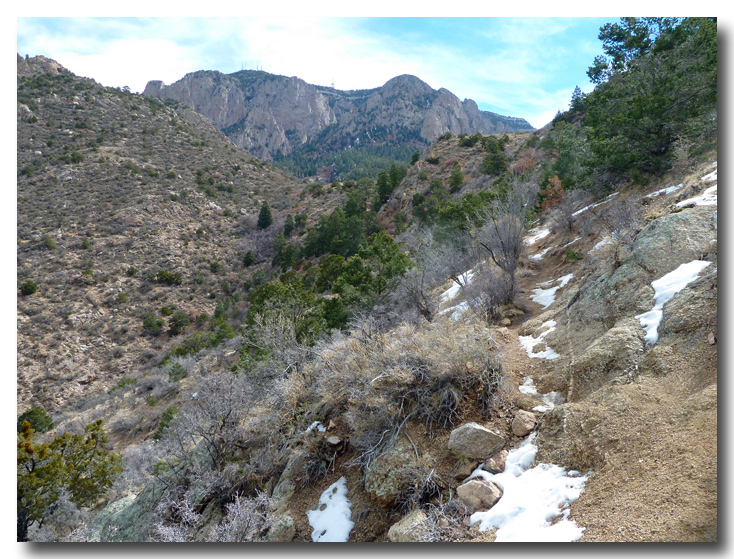
Once I joined the main trail it was mostly dry all the way up to the Le Cueva overlook where I snapped this shot of the trail crossing the rock fall field.
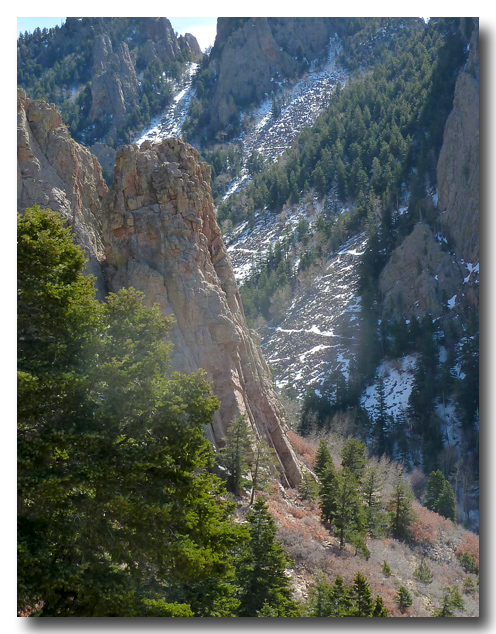
I know from experience that most people turn around at the 5 mile marker in the winter unless they proceed straight up the canyon. I figured that the snow melt would have made the trail passable but I was worried about post-holing into the deep snow.
Just as I came to the 5 mile marker a group of hikers decided to go ahead up the switchbacks. It was clear to me that this was going to be a somewhat difficult slog for them as it looked like there had maybe been only one or two people on that part of the trail and it had been a long time prior. I sure didn't want to try and be the one breaking the trail.
My route took me straight up the canyon, and after a few missteps and slips I made it into the main "groove" which had clearly been both snow shoed and spiked through.
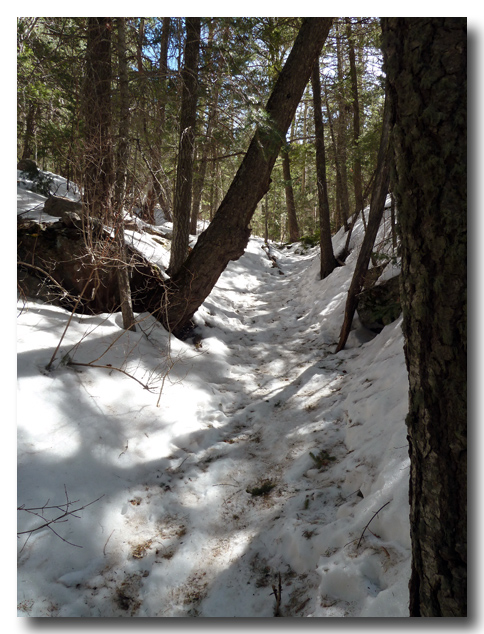
But here you can also see what gave me a bit of an extra "edge" on all of the ice, the snow under the trees was full of fallen debris, pine needles, branches, sticks and twigs. Once I saw all of the "junk" in the trail I was quite happy. I was pretty sure that I could make it up to the tram as long as I took it slowly and deliberately.
The field of debris continued all the way until the trail ran into the last 9 switchbacks very near the end of the trail.
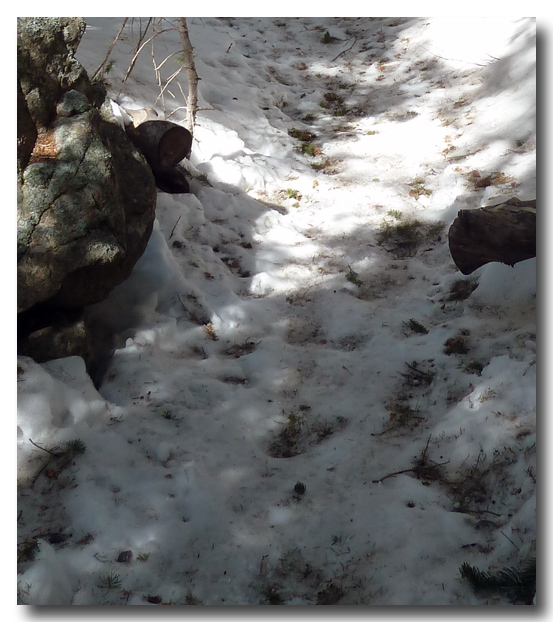
At that pont however, the trail conditions changed. Part of the trail was in the exposed sun, and there was very little in the way of debris to assist, and after one or two switchbacks someone had started another trail straight up the mountain. I decided to go for the straight shot, and even though there were some carved footprints for traction, my fear of doing the post hole trick were soon to be realized. My left leg sunk to mid thigh.
Twice I could have rejoined the main trail but I decided that the short route was to be preferred in the deep snow. In these conditions there is good news and bad news. The good news is that the snow, for the most part, supported all of my weight. The bad news is that when the snow is that hard, it's generally pretty frozen and that makes it slick and easy to slide off of.
In places the the "trail" consisted of one or maybe two sets of footprints across a snow filled slope.
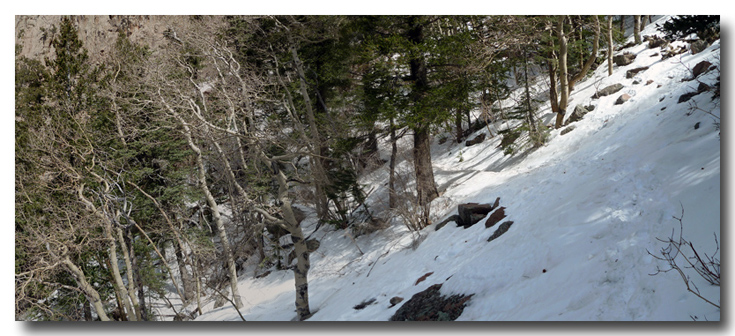
Larger image here.
The following two images show a couple of things, first the depth of the snow, and secondly how narrow the trail can be in places where all you have is inches and then a rather severe drop-off.
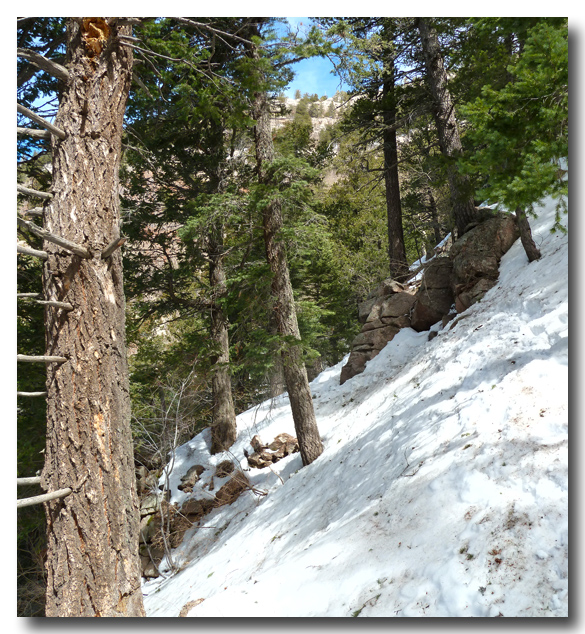
Approaching the rocks I would estimate that the snow is about 5 to 6 feet deep over the trail. The actual base of the trail is at the base of the rocks and the path that has been broken through the snow is very high over the trail. This will become a difficult section to navigate once the snow will no longer support a person's weight.
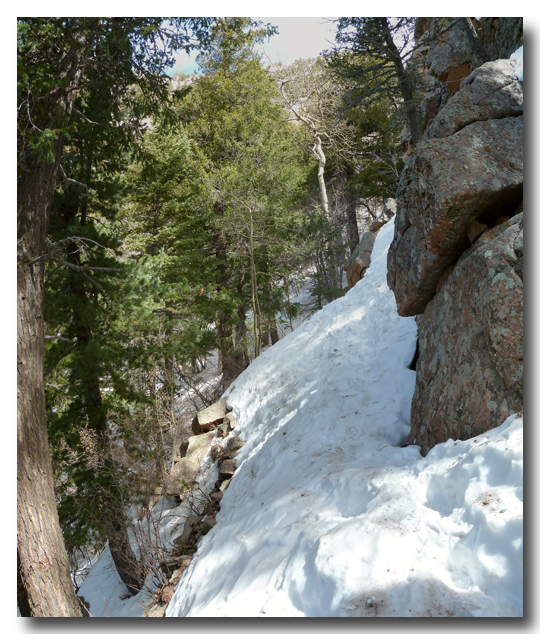
Once the rocks are reached you can see that there is not a whole lot of room for error here. These are the places where I wish I had brought along some kind of traction aid. What I did do this afternoon while writing this entry was to order a set of these from Amazon.
On the way up the slope I had run into a couple of hikers on their way down and was given a "trail report" about the upper reaches of the La Luz Once you reach the saddle they said, the trail is dry heading on out to the tram.
The report was half right. As you can see from the panorama taken just east of the saddle, the trail is indeed mostly dry and free of snow.
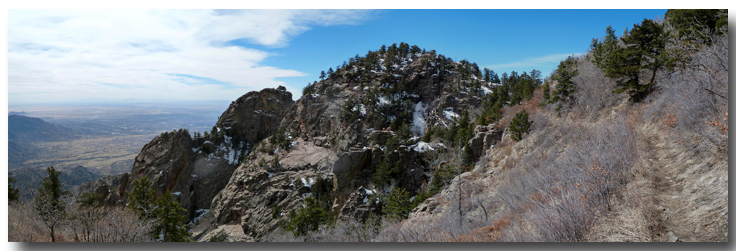
Larger image here. After loading click on the image to max size.
However, the 1.1 mile walk across this part of the Sandias is divided into two distinct sections, at least from the point of view of snow. The first is the north facing slope and the second would be the west facing slopes. The north facing slopes are generally free of trees and are covered only with the scrub oak you see above. The west facing slopes are tree covered and shaded, and therefore, still full of snow, at least on this trip.
I for one was looking forward to a snow free walk, and have to tell you that I suspect that it may take more than 2 weeks for all of this to disappear.
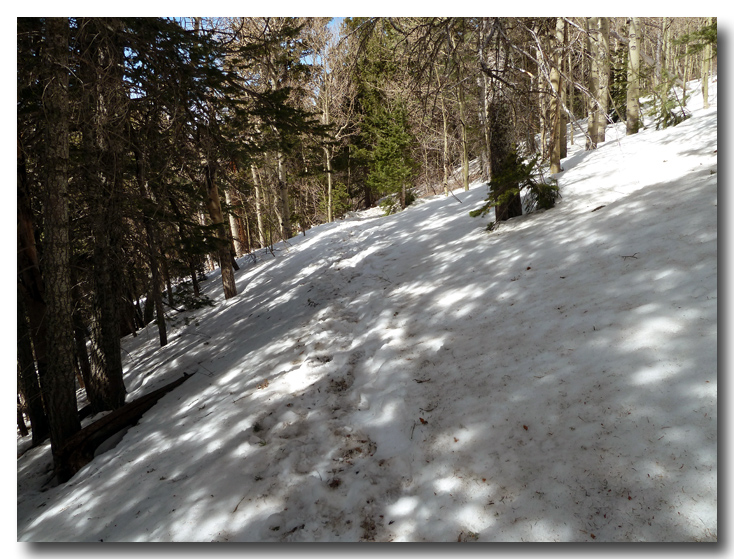
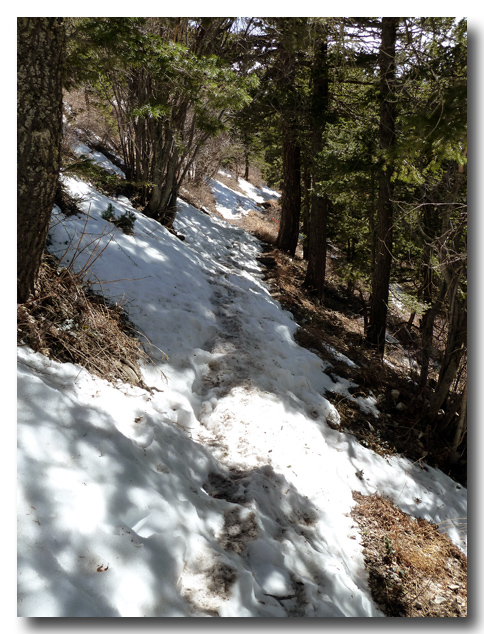
The majority of this snow should be gone in a week or two I suspect. There are however sections near the end of the trail where the depth is still somewhere between 4 and 5 feet which will make for wet navigation for the near term.
I guess the sign says it all, it can be icy and dangerous.
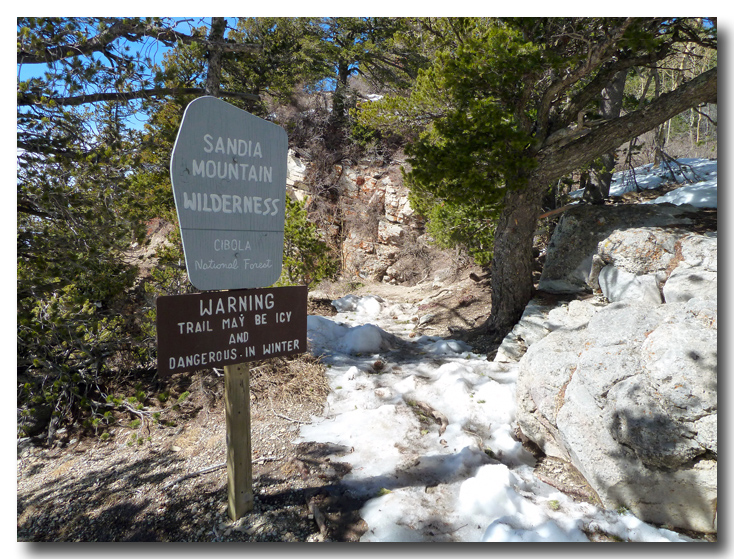
For the next couple of weeks I'd say you better have waterproof boots and I'm thinking as the snow loses it ability to support adults, you might want to have gaiters with you if you don't want your boots full of snow.
Oh, and don't forget the poles and spikes.

